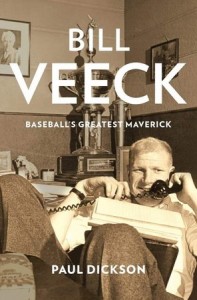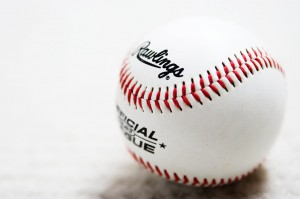
Major League Encounters gets to the heart of the national pastime, and those privileged to play it at its highest level.
Major League Encounters
By Larry LaRue
Reader Publishing Group 2012
$11.95 print – eBook $3.99
Amazon.com
Barnesandnoble.com
Baseball Hall of Famer Bill Mazeroski earned his way into the HOF more with his glove than his bat – he was known as a second baseman who could capture a moving baseball and skillfully turn it into a double play. In long-time sportswriter (more than three decades) Larry LaRue’s first book – Major League Encounters – LaRue proves he can capture a moving baseball story and skillfully turn a phrase as he tells it.
In 100 real vignettes over 255 pages, LaRue gives readers a behind-the-scenes look at what drives the men – and boys – who earn the rare opportunity to play the game at its highest level. Readers get the benefit not only of LaRue’s sportswriter’s access, but of his knowledge of the game, powers of observation, interview skills and way with words.
The stories range from heart-warming to heart-breaking and from comic, to tragic, to dramatic. They are stories of weakness and stories of courage – of success, failure and perseverance – of veterans who enjoyed long careers and players with shorter, less-stellar stats sheets. Most of all they are very personal stories, glimpses into the heart of the game and those who play it.
You’ll read about:
– The forces that drove Jim Abbot, who won 87 games and threw a no-hitter, despite being born with no right hand;
– The trials of Ken Caminiti, the 1996 NL MVP, who LaRue writes “kept his demons close and hid them well,” and who died at age 41 from “acute intoxication due to the combined effects of cocaine and opiates;”
– The passion for the game that drove utility man Rich Amaral, who LaRue tells readers “kept chasing baseball long after it stopped chasing him;”
– Hall of Famer hurler Bert Blyleven’s legendary sense of humor and skill at applying a devastating hot foot (when he was with the Angels, the team had a fire extinguisher in the dugout labeled “In case of Blyleven – Pull;”
– Cal Ripken, Jr.’s love of the game “Every day, it’s like being a little kid again;”
– Pitcher Freddie Garcia, who had a “capacity for fun that might have killed a lesser man.”
In terms of reading enjoyment, not only are the stories compelling, LaRue has a way with words that gets right to the point and pulls you into (and through) each story. Consider these opening lines:
The Barry Bonds’ story begins “Follow Barry Bonds for a few days and the three words most used to describe him – by friends, teammates and coaches – were ‘That’s just Barry.’ Occasionally, they were meant to be complementary.”
Then there are the opening lines for power hitting first baseman and 1995 AL MVP Mo Vaughn, “Mo Vaughn read newspapers, which never made him doubt his talent. Occasionally, it made him wish he was illiterate.”
LaRue’s insight into two-time AL batting champion Edgar Martinez begins with “The first time the Seattle Mariners offered him a contract, Edgar Martinez turned them down because he had everything he wanted – a factory job and a new Toyota.”
Or Reggie Jackson: “There were four or five Reggie Jacksons and I got to meet all of them in the year we were together with the California Angels.”
Depicting current Seattle Mariners pitcher Tom Wilhelmsen, who made it to the majors in 2011 at age 27, LaRue begins: “At 19, Tom Wilhelmsen faced a life-changing decision – continue his career as a highly rated minor league prospect or keep smoking dope. For Wilhelmsen the choice was clear. He walked away from baseball, became a bartender and traveled the world, smoking as he went.”
If you’re a baseball fan, this is a great book to keep on your bed stand, carry aboard an airplane, take to the beach, enjoy at a coffee shop or even read between innings at a ball game (when you put your scorecard down.) The only problem is you’ll start out planning to pass the time by reading just a few stories and find yourself committing to “just one more” again and again.
Are all 100 stories absolute gems? No, but LaRue’s batting average is well north of .900 – and that makes Major League Encounters highly entertaining, a hit with BBRT and recommended reading for the avid and casual fan.












